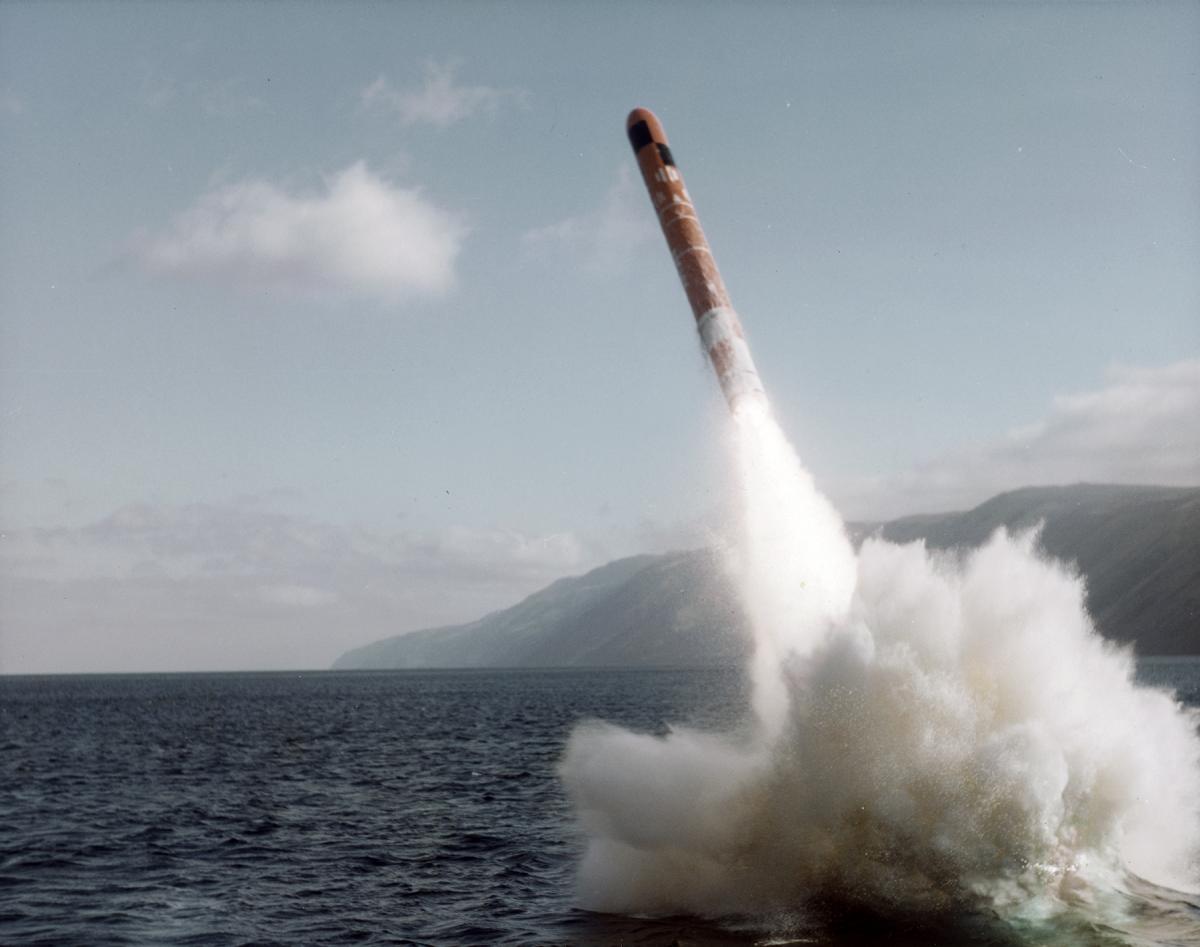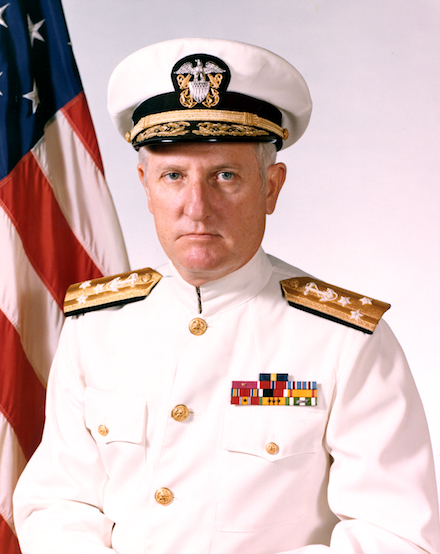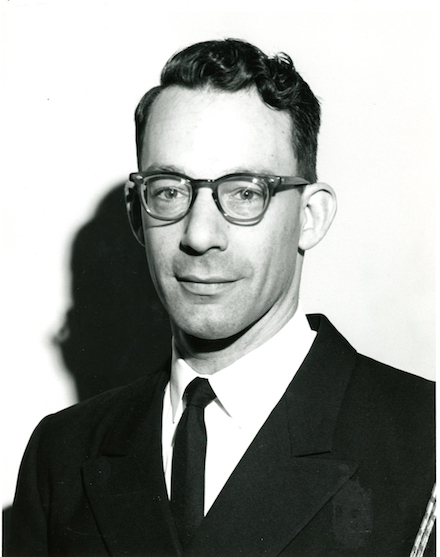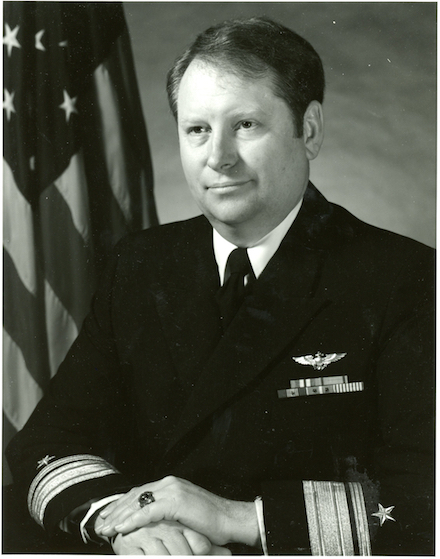
The Chief of Naval Operations’ Strategic Studies Group lost its edge, but the service needs another innovation cell like the ones behind development of the composite warfare commander concept and Tomahawk.
The U.S. Navy relies on innovation to maintain its warfighting advantage. Ensuring such overmatch requires leaders to sustain innovations that enhance current core capabilities, but they also must understand how and when to champion disruptive innovations to create new competencies. The challenge is to balance the need to win today’s war with the need to win the next one.
Addressing this balancing act, Chief of Naval Operations (CNO) Admiral John Richardson published “A Design for Maintaining Maritime Superiority” to provide a framework for analyzing Navy problems and fostering innovation at the rapid pace of technological change. Just three months after publishing “Design,” however, the CNO disbanded his Strategic Studies Group (SSG).
What was Admiral Richardson thinking? Wasn’t the SSG a wellspring for innovative thinkers, including famed alumni such as Vice Admiral Arthur Cebrowski and Admiral Bill Owens?
But if we view the SSG in a disruptive light, it appears Admiral Richardson was right to disband it.
Championing Disruptive Innovations
Disruptive innovation is an engine of change. When operating properly, the engine has three key features:
• Ignition. This is the why—an unmet challenge.
• Fuel. This is the who—a champion willing to tackle the challenge.
• Throttle. This is the how—an innovation cell created by the champion and led by a translator.1
The champion is a naval leader who envisions a new way of warfighting and brings about a change to address an unmet challenge. Heeding a Naval War College study that concluded “the best way to foster innovation in a large bureaucracy is to create enclaves that can operate as small organizations,” the champion creates an enclave to protect his or her innovators from traditionalists favoring the status quo.2 The champion then selects a translator to lead the innovation cell.
Translators are warfighters and risk takers who focus on pursuing breakthrough capabilities through recombinant innovation: linking old and new technologies with new doctrine in a novel way that enables a revolutionary operational concept.3
Three case studies illustrate the why, who, and how required for the engine of change to achieve a disruptive innovation.
Composite Warfare Commander
After Vietnam, the Navy began seeking balance between power projection ashore and sea control. To achieve this balance, then-Chief of Naval Operations Admiral James Holloway envisioned the carrier battle group, including attack submarines in direct support, as a naval combined arms force. He also conceived a war plan that used three carrier battle groups to strike the Soviet Union in the event of war.4
The first unmet challenge was inadequate command and control (C2) of the combined arms of a battle group. How would the officer in tactical command (OTC) control the multiple weapon systems of each platform? The second unmet challenge was deficient C2 for operating several battle groups together.
 Vice Admiral James Doyle Jr. was the champion of the composite warfare commander (CWC). As Commander, Third Fleet, in the mid-1970s, he was responsible for training the ships and aircraft deploying to Seventh Fleet. “It was obvious that the traditional approach where the task group commander aboard the carrier was responsible for the minute-to-minute, hour-to-hour, day-to-day tactical control for aviation strike, [antiair warfare], and [antisubmarine warfare] was not working,” Doyle explained. “There was too much responsibility for one person and one staff.”5
Vice Admiral James Doyle Jr. was the champion of the composite warfare commander (CWC). As Commander, Third Fleet, in the mid-1970s, he was responsible for training the ships and aircraft deploying to Seventh Fleet. “It was obvious that the traditional approach where the task group commander aboard the carrier was responsible for the minute-to-minute, hour-to-hour, day-to-day tactical control for aviation strike, [antiair warfare], and [antisubmarine warfare] was not working,” Doyle explained. “There was too much responsibility for one person and one staff.”5
To solve this C2 problem, Doyle selected Bernie Schneiderman, a civilian analyst working for Third Fleet, and Captain Stu Landersman, commander of Destroyer Squadron 23, to act as translators for an innovation cell composed of members of Doyle’s tactical development and experiment section. Their challenge was to determine how the various warfare areas could be commanded.
Historically, the antiair warfare (AAW) coordinator was the senior surface warfare officer commanding a cruiser. The breakthrough came when the innovation cell reasoned if the Navy was putting all antiair resources under the OTC, then the same approach might work for antisubmarine warfare (ASW) and antisurface warfare (ASUW). Thus, they created the CWC tactical memo in which the ASW coordinator and ASUW coordinator had equal status to the AAW coordinator.6 Put simply, each warfare commander could task any asset in the battlegroup, and when conflicts occurred over use of an asset, the OTC controlled by negation.
The next step was for Landersman to test CWC at sea. Traditionally, the ASW commander was a surface warfare commodore embarked on a destroyer, but Landersman soon realized the destroyers had limited C2 assets compared to the cruiser AAW commander. So he decided to conduct his ASW function on the carrier. He met resistance from the surface warfare community for not being on a destroyer, and the aviation staff insisted he had to be part of their staff if he wanted to issue orders. After considerable wrangling and support from Admiral Doyle, the staff aviators allowed Landersman to execute the CWC doctrine on board the carrier.7 Captain Stu Landersman

Landersman’s next breakthrough came when he started working with Captain Jerry Holland, an innovative submarine squadron commander. Landersman believed the best ASW system was another submarine, and getting submarines to play in the CWC concept was a major factor in its success. The problem was that aviator battlegroup commanders were not allowed to coordinate the movements of a submarine supporting the battlegroup—submarine admirals retained operational control.
Holland solved this problem by creating a specially certified submarine officer to ride the carrier and direct employment of the submarine. Landersman and Holland then shifted their ASW effort from defensive to offensive. Over the next two years of testing, they were able to achieve approximately 50 constructive submarine kills during major fleet exercises, an unheard of accomplishment.8
At future Chief of Naval Operations Admiral Thomas Hayward’s request, Landersman started a school to teach CWC, but the Pacific surface warfare quotas went unfilled. The Pacific cruiser-destroyer commanders opposed CWC because they were not allowed to command carrier battle groups and believed the surface warfare community would be cut out of valuable naval operations. Admiral Hayward solved the attendance problem by conducting an unannounced visit to San Diego and visiting only Landersman. Immediately, the CWC slots were filled.9
CWC was a disruptive innovation that created a new way to fight—naval combined arms warfare. It was successful because the translator was a fearless risk taker, and when he faced resistance, the champion intervened. But there is only so much a senior champion can do to protect the translator. Landersman was passed over for promotion to admiral.
Tomahawk Technology
After World War II, carrier aviation owned strike warfare. Creating a long-range cruise missile launched from a surface ship was a major shift in warfighting. There were two disruptive innovations—one technological and one doctrinal—that resulted in surface land-attack warfare. The disruptive technological breakthrough was development of the Tomahawk cruise missile.
The unmet challenge was the Soviets’ rapidly expanding arsenal of nuclear missiles and building of naval ships to launch them. This created a requirement for the U.S. Navy to find and sink these ships before they could strike. Naval aviation did not support surface vessels acquiring cruise missile capabilities; they wanted the surface community to remain focused on providing carrier protection. But in 1967, the sinking of the Israeli destroyer Eilat by an Egyptian Styx cruise missile changed naval warfare.
Following the sinking of the Eilat, Rear Admiral Elmo Zumwalt was tasked with leading a study on cruise missiles, which eventually led to development of the Harpoon. To gain the support of the aviation union, however, the Harpoon was limited in range as a countership missile. Zumwalt championed creating a long-range cruise missile capability for surface ships, a conviction he brought with him when he became CNO in 1970.10

Commander (later Rear Admiral) Walter Locke was a translator for development of the tactical Tomahawk, working on the program quietly as a spin-off of the strategic nuclear variant.
Commander Walter Locke, the Harpoon guidance project officer, would become the translator for development of the Tomahawk. In 1972, the United States signed the SALT I agreement limiting ballistic-missile production but not nuclear cruise missiles. Locke used the agreement to convince Congress to fund a nuclear-capable advanced cruise missile (ACM). Congress liked the strategic implications of a submarine-launched cruise missile that would provide a fourth leg to the traditional strategic triad.
While working on the ACM nuclear variant, Locke became convinced a conventional land-attack variant with a high-explosive warhead held untold potential and began secretly developing it.11 As long as a strategic missile appeared to be Locke’s goal, his tactical version could be treated as a spin-off and not raise eyebrows in the aviation community.
By 1980, Locke had created a digital scene-matching guidance system with unheard-of precision. The innovation cell created a conventional Tomahawk that could fly more than 1,000 miles with great accuracy, enabling surface combatants and submarines to mount land-attack operations independent of the carrier battle group.12
In 1982, however, Locke was relieved as Tomahawk program manager because senior naval leaders feared another Admiral Hyman Rickover–like dynasty, as Locke effectively had bypassed naval leadership and created a strong base within Congress for the conventional Tomahawk. Although the Tomahawk was a disruptive technological innovation, using it in a disruptive way would take another engine of change and champion, translator, and innovation cell.
Tomahawk Doctrine
With the 1992 publication of “From the Sea,” Chief of Naval Operations Admiral Frank Kelso and Marine Corps Commandant General Carl Mundy would become the champions of Tomahawk deployment, as the white paper shifted the sea services’ focus to operating in the littorals using naval expeditionary forces to project power ashore. A key element of projecting power ashore was “Tomahawk cruise missiles from surface forces and attack submarines.”13
The translators were Rear Admiral Ted Baker and Major General Matthew Caulfield. Their innovation cell consisted of 18 captains/colonels and commanders/lieutenant colonels drawn from the Navy and Marine Corps staffs. Navy Captain “Rusty” Petrie, a serving carrier air wing commander, proposed that Tomahawk surface combatants could perform strike warfare—a mission previously reserved for aviators.
Petrie’s decision to support surface strike warfare was the defining moment of the Tomahawk disruptive innovation.14 For the first time, an aviator in command of a carrier air wing openly supported a surface combatant force operating separately from the carrier battle group performing the strike warfare mission.
At great risk to his career, Petrie broke ranks with the aviation community and championed using Tomahawks in a surface action group. He too was passed over for admiral.
These three case studies provide a framework for the why, who, and how required for an engine of change to achieve a disruptive innovation. Notably, in all cases, the engines of change had a natural life cycle. They all disbanded after the disruptive innovation achieved the unmet challenge.
The SSG
Initially, the SSG was a full-throttle engine of change for disruptive innovation. The ignition was the Navy’s challenge in planning for a global war with the Soviet Union. Chief of Naval Operations Admiral Tom Hayward was the fuel, establishing the SSG in 1981 to generate revolutionary naval warfighting. The SSG reported directly to the CNO, who acted as the champion, and focused on CNO-directed problems.
The first five translators were senior civilians, followed by retired Admiral James Hogg, who served as SSG director for 18 years, and then a three-year tour by retired Vice Admiral James Wisecup. Admiral Hayward personally selected the first officers for the SSG innovation cell, individuals he felt “would certainly be the best future choices for flag rank.”15 The first group focused on fleshing out a combined arms approach to ASW. The next several SSGs focused on developing the key tenets of the 1986 Maritime Strategy.
Over time, however, the engine of change started to sputter, resulting in the SSG decelerating the “truly cutting edge, quick reaction, high impact work” of its early days.16 Rather than focusing on disruptive innovations, the SSG had become a think tank, producing studies.
Something was wrong. First, as the number of Navy captains in the SSG swelled, the group became a “less dynamic set of fellows.”17 Second, the SSG surpassed its natural life cycle. Each disruptive engine of change is designed to solve a specific set of unmet challenges; reusing an engine to meet new challenges typically does not work. Third, the fearlessness necessary to achieve disruptive innovations was lacking. The status quo Navy was not threatening anyone’s career, and no fellow needed the CNO’s protection, indicators that nothing disruptive was emerging from the SSG.
The SSG engine of change had become too slow. The CNO made the right choice in disbanding it.
Deep Blue 2
As the CNO champions “Design,” he should consider establishing an engine of change like Deep Blue. Admiral Vern Clark championed Deep Blue in reaction to the unmet challenges the Navy faced after 9/11. It was designed to “provide the CNO a direct, quick reaction, operational/tactical think tank in his immediate orbit.”18 It was a hot-running engine of change that lasted seven years and provided several disruptive innovations, including the expeditionary strike group and the fleet response plan.
One of the keys to its success was Admiral Clark’s selection of fearless translators such as Admiral James Stavridis and Vice Admiral Doug Crowder. Like Landersman, Locke, and Petrie, Stavridis and Crowder faced considerable resistance from the status quo Navy. “I was told on two separate times my career was over from senior four-star admirals who did not like some of the things we were advocating,” Admiral Stavridis noted.19 Vice Admiral Crowder stated, “Deep Blue was like an anti-body in the OPNAV staff . . . a senior admiral put me on report with Admiral Clark saying I had ‘an attitude.’”20
The Deep Blue innovation cell originally had six full-time billets and consisted of officers from all war-fighting communities. It operated as a CNO-protected enclave within the Pentagon until it was disbanded in 2008, having served its purpose meeting the unmet challenges of 9/11.21
The CNO should champion Deep Blue 2 at the Pentagon to address the Navy’s current challenges—hyperwar, cyber, or artificial intelligence, to name a few—and select a fearless translator. He should have little difficulty finding translators who have innovation risk-taking in their DNA. They are just waiting for their chance to become the CNO’s fearless translators.
1. Richard O. Hundley, “Past Revolutions Future Transformations,” RAND (1999), xix.
2. Bradd Hayes, “Transforming the Navy,” Report 00-3, Decision Strategies Department, Naval War College (2000), 13.
3. Andrew Hargadon, How Breakthroughs Happen: The Surprising Truth About How Companies Innovate (Boston: HBS, 2003), 24–25.
4. Frederick H. Hartmann, Naval Renaissance: The U.S. Navy in the 1980s (Annapolis, MD: Naval Institute Press, 1990), 28.
5. VADM James H. Doyle Jr, USN (Ret.), oral history, Naval Historical Center (1997), 55–56.
6. CAPT Stuart Landersman, USN (Ret.), oral history, Naval Historical Center (2001). The tactical memo was COMTHIRDFLT CWC tactical memo, 510-1-76.
7. Landersman, oral history.
8. Phone interview with Captain Landersman, 25 March 2001.
9. Phone interview with Captain Landersman.
10. Gregory Engel, “Cruise Missiles and the Tomahawk,” in Bradd Hayes and Douglas South (eds), The Politics of Naval Innovation (Newport, RI: Naval War College Press, 1994).
11. Hayes, “Transforming the Navy,” 17.
12. Hayes, “Transforming the Navy,” 30.
13. ADM Frank Kelso II, USN, and GEN Carl Mundy, USMC, “. . . From the Sea: Preparing the Naval Service for the 21st Century” (September 1992).
14. Hayes and South (eds.), The Politics of Naval Innovation, 90.
15. John B. Hattendorf, “The Evolution of the U.S. Navy’s Maritime Strategy, 1977–1986,” Naval War College Newport Paper Number 19 (2004), 45.
16. ADM James Stavridis, USN (Ret.), “CNO’s Decision to Terminate Strategic Studies Group Is Smart – It Used to Be Good But Lately Was Fiddling Around,” Foreign Policy (8 April 2016).
17. Stavridis, “CNO’s decision.”
18. Stavridis, “CNO’s decision.”
19. Stavridis email to author, 28 April 2017.
20. Author interview with VADM Doug Crowder, USN (Ret.), 25 May 2017.
21. Christopher Cavas, “U.S. Navy Study Being Dissolved,” Defense News, 7 April 2016.
Captain Pierce served in the Navy for 28 years, retiring in 2005 from the Naval Postgraduate School as associate dean. He commanded the USS Whidbey Island (LSD-41) and was Chief of Staff, Amphibious Force Seventh Fleet. He currently is director of the Department of Homeland Security Center of Innovation at the U.S. Air Force Academy.


